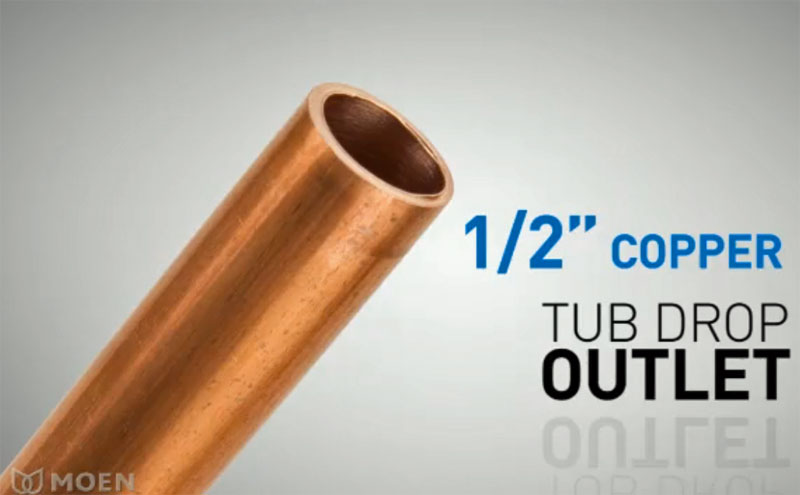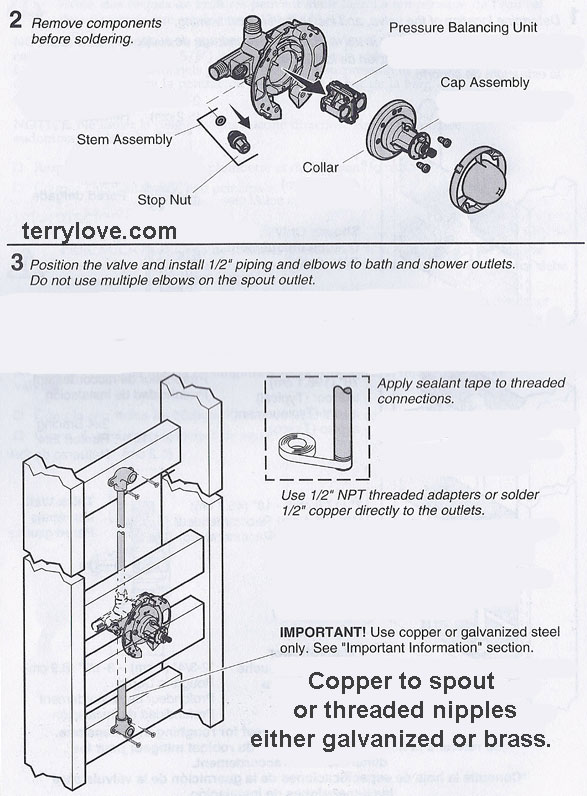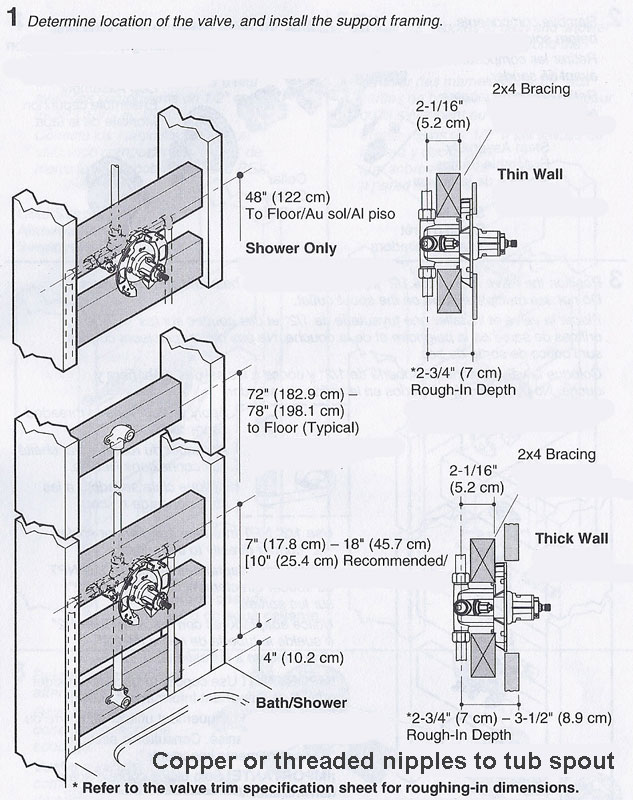Brandon in VA
New Member
I am roughing in the plumbing for a bathroom remodel and have run into an issue. The valve inlets sit very far back on the back of the valve (center is only 1" from back wall as installed in pic). When I go to connect the drop ear for the tub spout I don't have enough room to bend a short run of pex from the bottom of the valve to the drop ear because of the difference in depths of install. I started off thinking I would use two 90 degree elbows from the valve so that the line came forward and then dropped right in front of the drop ear brace, but in that setup the second elbow came too far forward. So I created the monster in this picture (the white pex at the bottom). After reading more, though, seems like this setup could create a backflow issue that could cause water to come back through the shower line when I turn on the tub. I haven't tested that yet. I'm thinking of two potential remedies, 1) setting the tub spout drop ear on a 1x4 brace at the very back of the recess so I could drop almost straight down from the valve to the drop ear with pex and get a longer nipple (it's now measured so that I'll have a 2" nipple that extends 7/16" through the finished wall), or 2) moving the tub valve brace closer to the front of the wall, using the two 90 degree elbow setup I mentioned above and getting a shorter nipple (I don't think I can get much shorter). Also, you'll notice the sharkbite shutoff valves installed. They were originally installed because I had a leaky valve and it was getting late in the day (that's fixed) and I planned on taking those out and redoing the Pex in those runs, but we're also considering putting in a wet bar on the other side of that wall so now I'm thinking I might leave those in case we would tap the lines for that. The valve is a Kohler K-11748. Any advice?




